FPSO Smart Parts Planning: Proven Methods to Cut Downtime
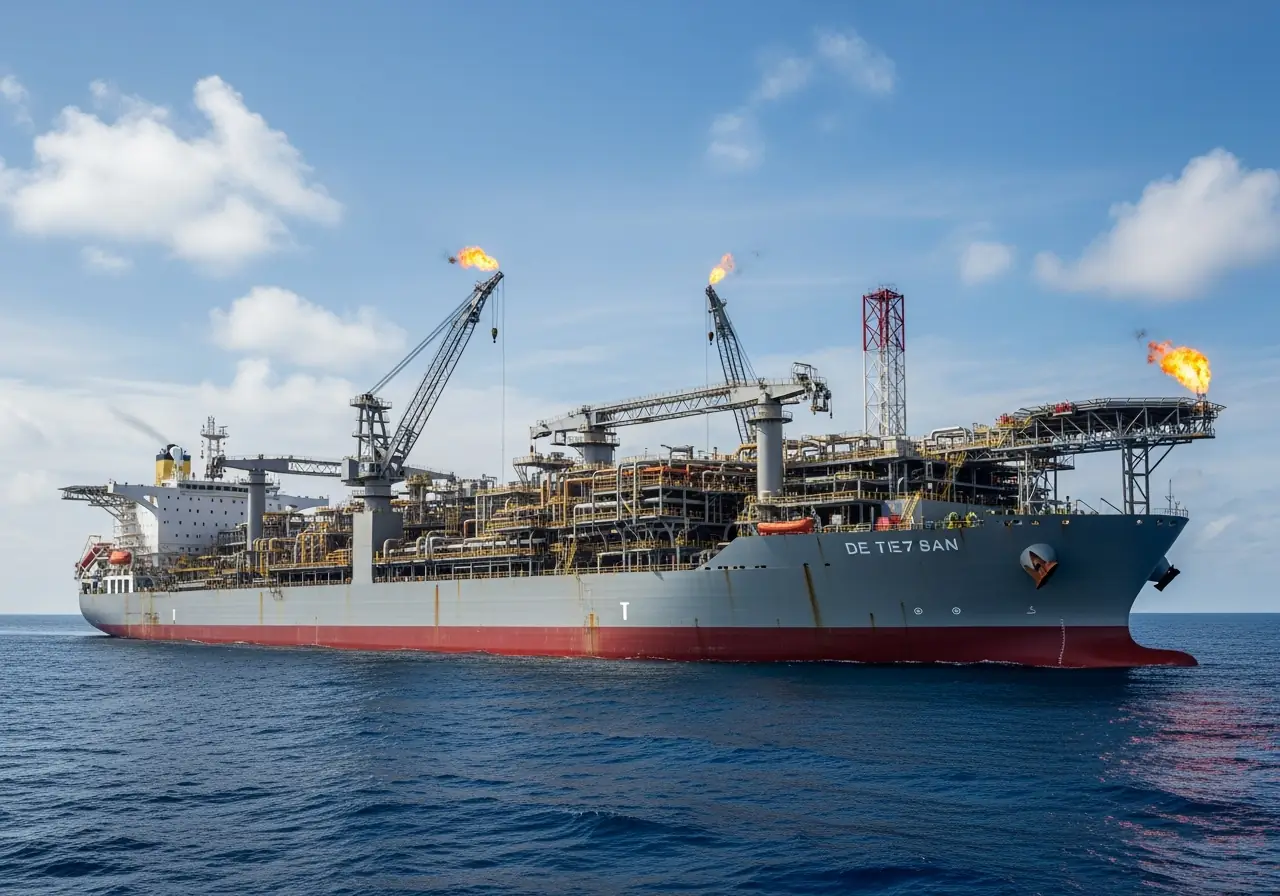
FPSO integrity management is vital because a single unplanned FPSO shutdown can cost operators up to $36 million in losses, including $30 million in deferred oil production. Beyond financial impact, FPSO downtime creates severe offshore safety risks - 145 casualties have occurred in enclosed vessel spaces over the last 20 years, with 28 incidents in just 16 months. Preventing shutdowns requires smart parts planning, predictive maintenance, and effective spare parts management.
By implementing inspection-driven maintenance routines, strategic spare kits, and vendor-qualified sourcing, operators can cut downtime by 80% and reduce maintenance costs by 25%. With FPSO vessel deployments projected to grow 14% by 2027, robust offshore spare parts planning systems are critical for asset reliability. Integrated with computerized maintenance management systems (CMMS) and order processing, these strategies boost productivity by 25%, improve stock utilization efficiency by 30%, and reduce storage needs by 20%, ensuring continuous FPSO uptime.
Failure Chains That Commonly Trigger FPSO Shutdowns
Successful FPSO shutdown prevention requires understanding how small failures cascade into major production stops. Identifying these failure chains allows for strategic spare parts planning before critical systems fail.
Hull Corrosion Impact on Structural Integrity
Hull integrity diminishes primarily through four corrosion types: general corrosion spreading uniformly across plates, pitting creating deep localized holes, grooving forming between structural members, and weld metal corrosion from galvanic action. After 25 years of service, hull strength decreases by 16.2% in hogging conditions and 14.96% in sagging conditions. Notably, pitting corrosion proves substantially more destructive, reducing ultimate strength by approximately 32% compared to intact conditions. Even minor coating failures expose underlying metal to saltwater and oxygen, accelerating material loss in critical structural elements. Corrosion under insulation (CUI) is a particularly insidious form of degradation that can go undetected for long periods, making regular ultrasonic testing crucial for maintaining structural integrity.
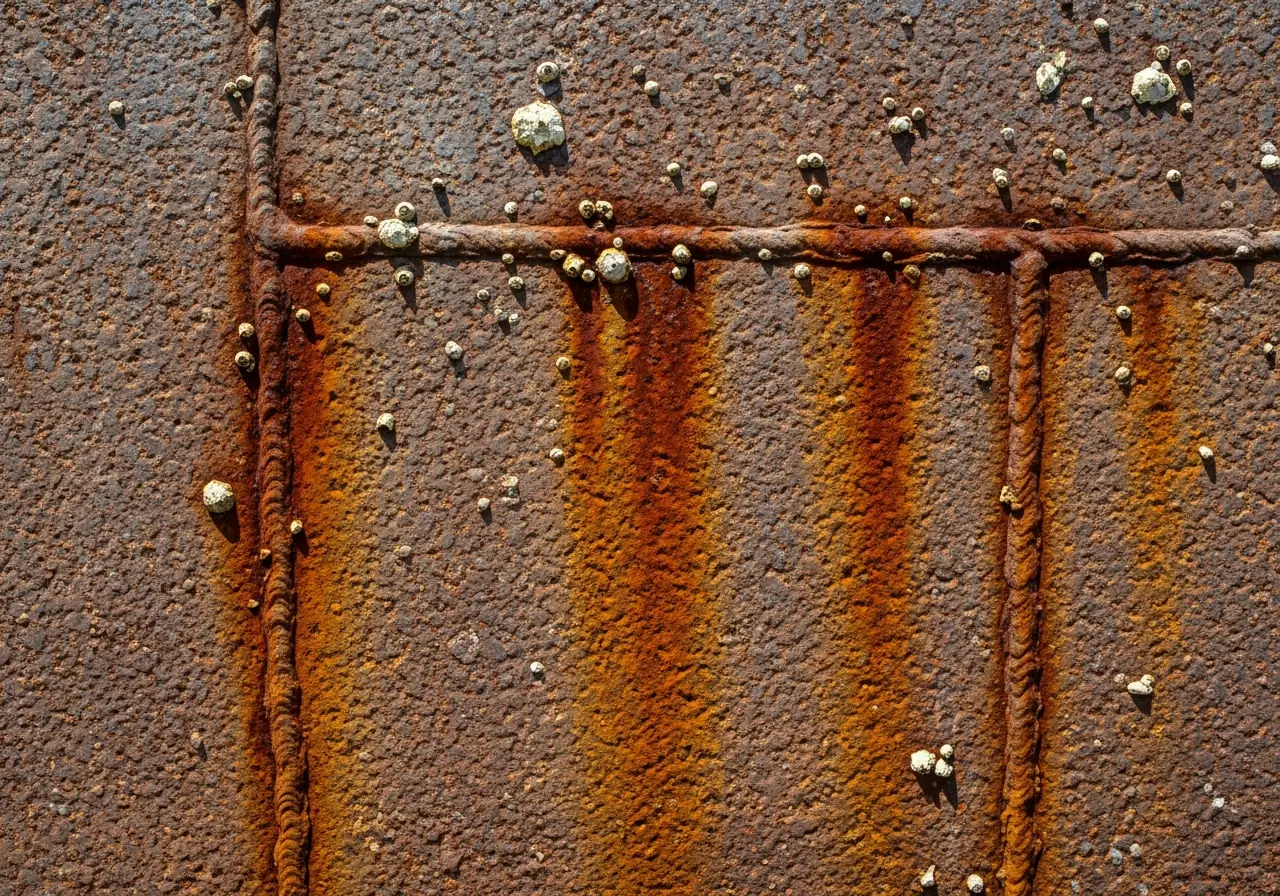
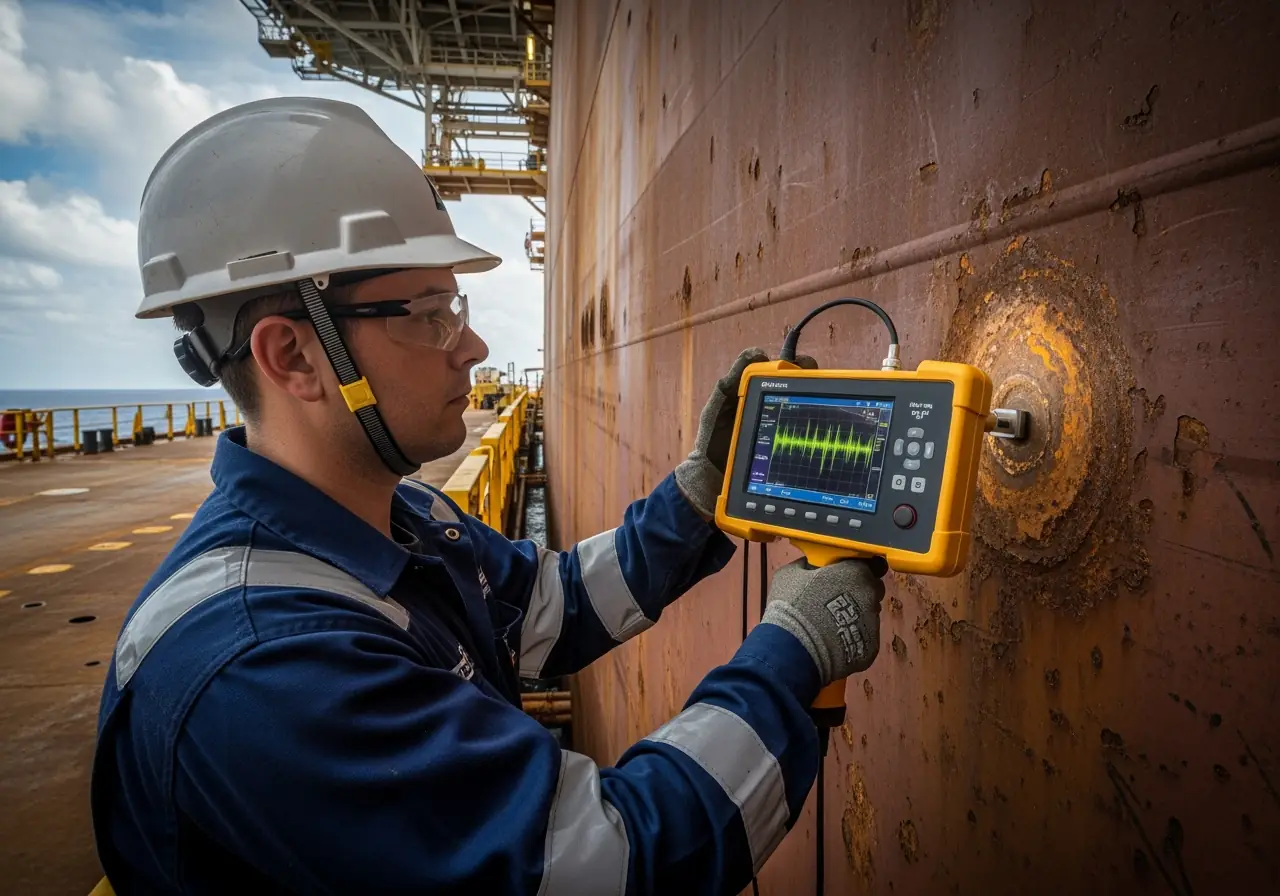
Thermal Cycling in Topside Equipment
Topside equipment undergoes significant thermal stress cycles that hasten material fatigue. In double-hulled FPSOs, cargo temperatures can reach 20°C higher than in single-hulled vessels, intensifying corrosion processes. Daily and seasonal thermal cycles cause substrates to expand and contract, subsequently stressing the protective coating. Over time, this cycling results in cracking, particularly in rigid coatings with low flexibility. Thermal cycling damage can lead to equipment failure and compromise fire suppression systems, making topside areas highly susceptible to explosions and fires, with 56% of offshore operations involving gas leaks.
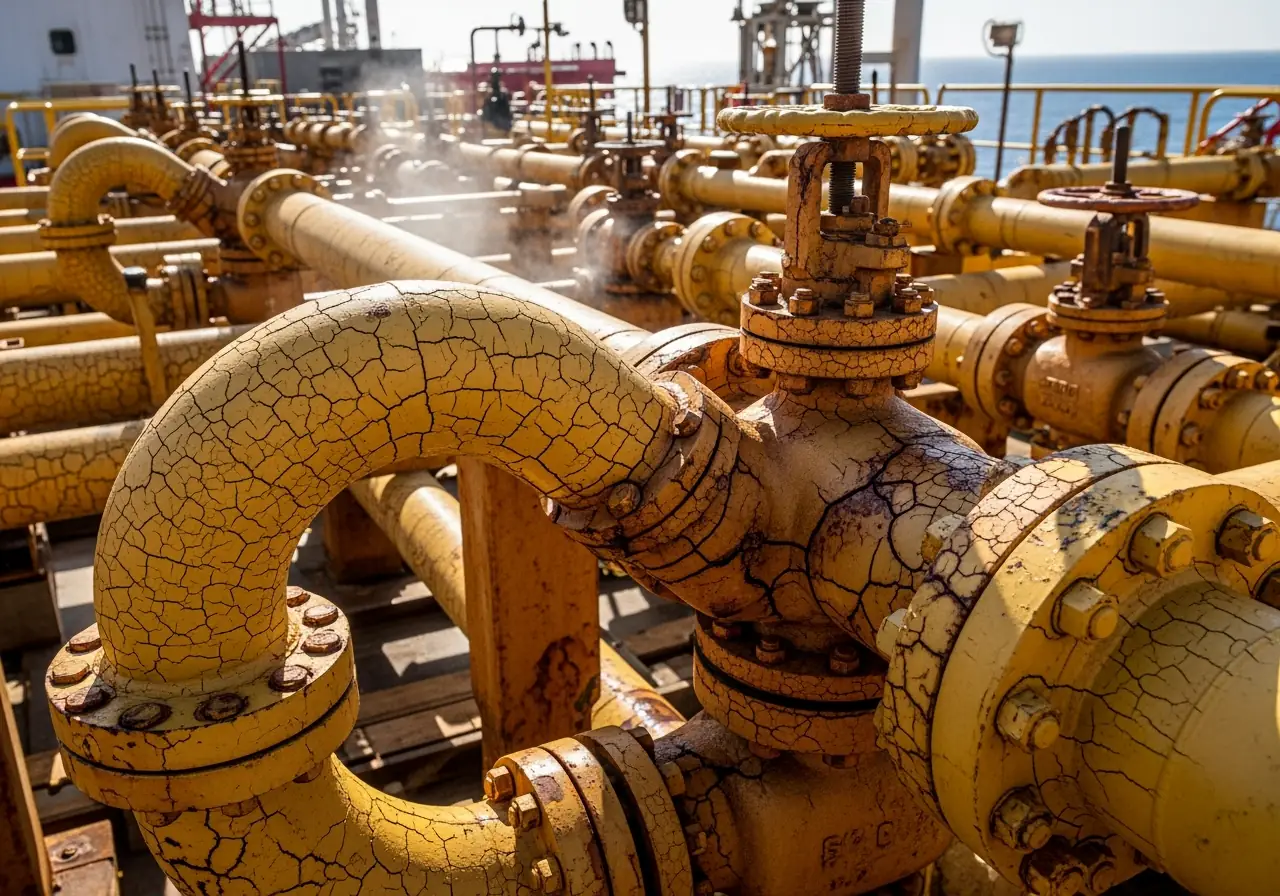
Mooring System Fatigue and Turret Misalignment
Mooring failures represent a persistent challenge, with 21 documented cases between 2001-2011, including nine involving multiple-line failures with catastrophic consequences. For turret-moored FPSOs, bearing systems transferring loads between earth-fixed and ship-fixed portions frequently experience excessive wear from eccentric loading. This wear accelerates when supporting FPSO structures lack sufficient stiffness. According to data, blackout scenarios have a probability of occurring once every seven years, creating vessel drift that could overstress the mooring system. In harsh environments, mooring loads can exceed 5,000 tons, representing a significant increase from typical values for existing turret-moored FPSOs.
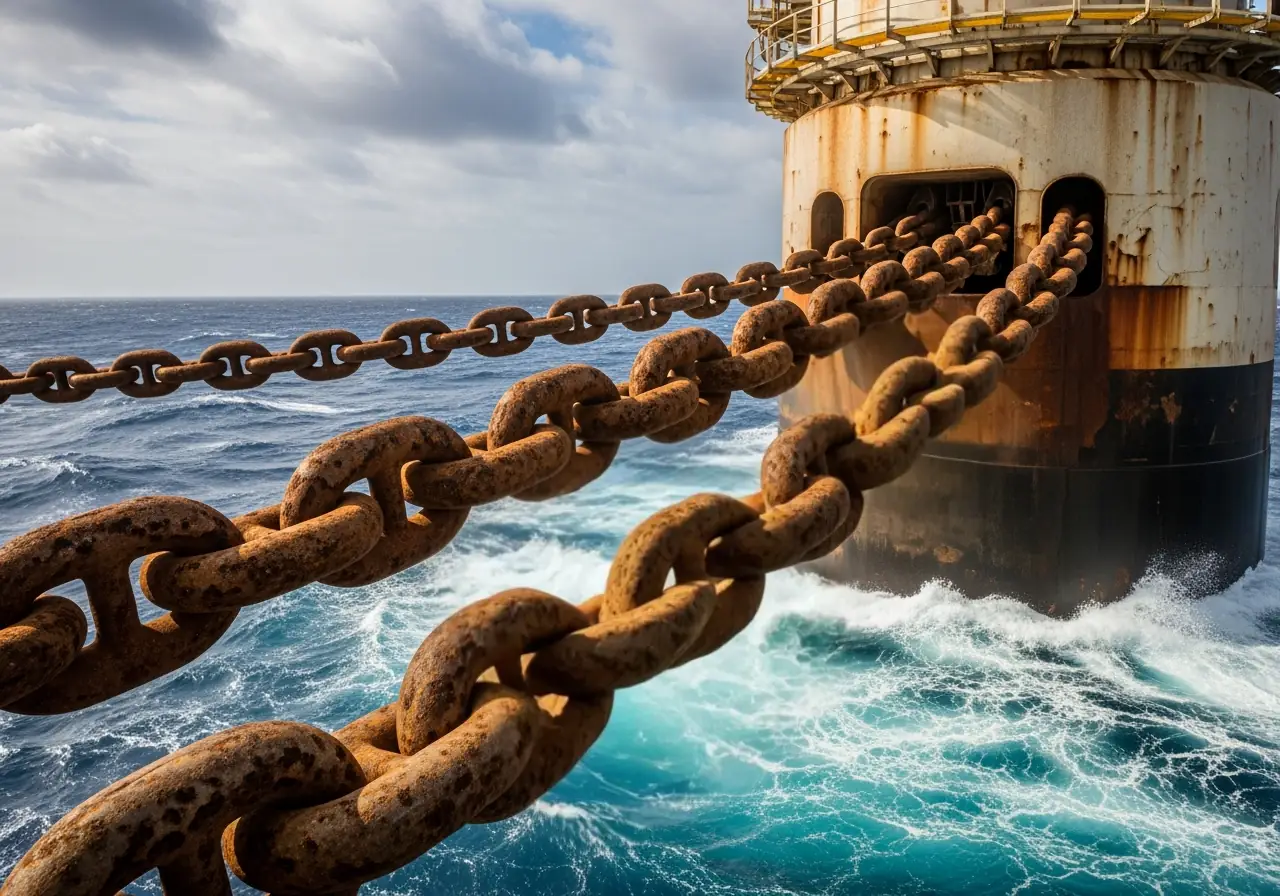
Pipeline and Riser Failures from MIC
Microbial-influenced corrosion (MIC) presents a serious threat to water injection pipelines, with typical corrosion rates reaching 2 mm annually. Studies of 23 pipelines revealed nine failures attributed to MIC, with an average service life of just 8 years. For flexible risers in deep waters, the main failure mode occurs at the top section near the end fitting due to fatigue in tensile armor wires. External sheath damage remains the most common failure mode in flexible pipes, with incidents increasing since 2001. Proper fluid system maintenance and regular inspection of subsea infrastructure are crucial for preventing these failures.
Keep your FPSO running at 99% operational efficiency. Partner with MCH Parts to source vendor-qualified spares, predictive maintenance solutions, and proven reliability strategies. Visit MCH Parts today and protect your offshore assets from costly shutdowns.
Inspection-Driven Triggers for Spare Parts Planning
Proactive inspection routines form the backbone of effective FPSO spare parts planning, enabling operators to identify potential failures before they trigger costly shutdowns.
Daily and Weekly Inspection Data for Predictive Planning
Effective integrity management requires consistent monitoring schedules that generate actionable data. Weekly inspections should include observing the relative rotation between earth-fixed and vessel-fixed parts for at least 30 minutes to gain insights into bearing system performance. Throughout these routines, technicians must verify proper grease expulsion from the turret while checking fresh grease levels in pump drums to prevent running dry. These regular checks generate data patterns that highlight emerging issues, thereby allowing maintenance teams to forecast parts requirements rather than reacting to failures. Implementing vibration monitoring systems can provide early warning of equipment issues, enhancing predictive maintenance capabilities.
Using FPSO Inspection Equipment to Flag Critical Wear
Advanced inspection technologies now enable operators to detect problems without production interruptions. Diverless robotic solutions represent a significant improvement over traditional diver-based inspections, enhancing both safety and efficiency. Technologies such as True Alternating Current Field Measurement (ACFM) electromagnetic inspection effectively detect surface-breaking cracks in critical welds with reporting thresholds of 20mm in length and 2mm in depth. For swivel systems, technicians must conduct visual examinations of main components, torque arms, and connections while listening for unusual sounds during vessel heading changes - often the first indicator of bearing or seal problems. Structural digital twins can be used to model and predict structural fatigue progression, allowing for more targeted inspections and maintenance.
API/ISO Standards for Intermediate Survey Intervals
API has published 275 standards applicable to offshore oil and gas operations, establishing foundational guidance since 1924. These standards enhance operational safety and environmental protection while gaining regulatory acceptance through technical rigor and third-party accreditation. By adhering to intermediate survey requirements outlined in these standards, operators ensure vessel integrity between major inspections. Indeed, this compliance enables operators to demonstrate regulatory adherence during audits. Properly implemented inspection programs following these standards allow operators to develop comprehensive maintenance schedules that anticipate parts requirements based on documented wear patterns rather than responding to emergency failures. ISO inspection standards further complement API guidelines, providing a robust framework for FPSO inspection protocols.
Blueprint for FPSO Spare Kits and Inventory Control
Strategic categorization of spare parts directly impacts your FPSO's operational reliability. The difference between occasional maintenance and costly shutdowns often hinges on your spare parts strategy.
Categorizing Spare Kits by Equipment Type
Effective FPSO spare parts planning requires distinguishing between operational and critical spares. Critical spare parts, despite lower failure rates, prevent prolonged shutdowns when they do fail. Initially, categorize components based on equipment function and safety impact, focusing primarily on HVAC systems, fire suppression systems, and emergency shutdown systems. Proper spare parts cataloging ensures quick access to critical components when needed.
Redundancy Planning for HVAC and Fire Systems
Critical equipment on FPSOs must be designed with redundancy - typically 2x50% or 3x33% configurations. For HVAC systems, implementing 100% redundancy ensures continued operation even if one unit fails. In practice, this means installing dual AC units with 2x50% fan sections or 2x100% ventilation systems as demonstrated in recent FPSO upgrades. Similar redundancy principles apply to fire suppression systems to maintain safety standards.
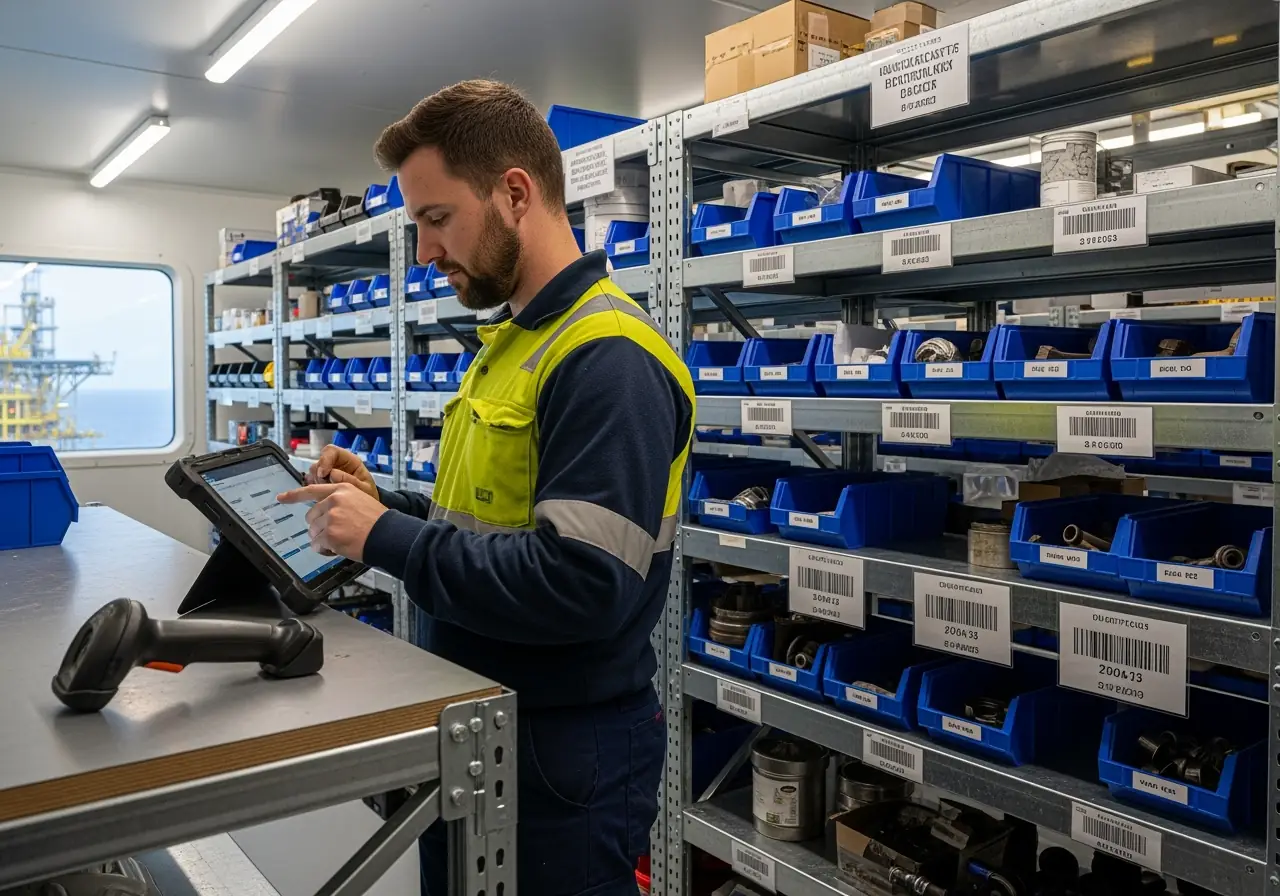
Inventory Control Using CMMS Integration
Integrating computerized maintenance management systems (CMMS) with inventory software enables real-time tracking of spare parts usage. Essentially, this automation reduces downtime by up to 40% among vessels using predictive inventory systems. CMMS software helps identify assets through standardized naming conventions and facilitates equipment health tracking. Consider reaching out to MCH Parts for a free sourcing machinery or parts consultation, ensuring your business benefits from top-tier equipment and service.
Vendor Qualification for Long-Lead Components
Even if components meet technical specifications, vendors must undergo thorough screening before business engagement. First thing to remember: suppliers must demonstrate competency, honesty, and adherence to anti-corruption laws. This qualification process is critical for specialized offshore components that often face supply chain hurdles. Ensuring vendors can meet regulatory compliance standards is essential for maintaining operational efficiency.
Unplanned stoppages can cost up to $36M - don’t leave your FPSO exposed. MCH Parts delivers certified offshore components, smart spare kits, and sourcing expertise to cut downtime by 80% and reduce maintenance costs by 25%. Secure your spares now at MCH Parts.
Predictive Maintenance and Downtime Avoidance
Advanced technology now enables FPSO operators to predict failures before they occur, drastically reducing costly shutdowns and extending equipment life.
Real-Time Monitoring to Forecast Failures
Proactive integrity management through real-time monitoring technology helps identify early signs of wear or damage, ensuring assets operate within design specifications. IoT devices and sensors facilitate continuous data collection, allowing operators to check asset conditions and anticipate problems before escalation. Sensors can programmatically identify variations in structural integrity, prompting timely remedial action. Through this approach, you'll significantly improve safety and operational effectiveness by reducing unscheduled downtime from failures. Sensor-based analytics and condition monitoring systems play a crucial role in this predictive approach.
CMMS Integration for Predictive Parts Ordering
BASSNET, a Computerized Maintenance Management System (CMMS) utilized by FPSOs, tracks preservation and troubleshooting jobs performed on equipment. Although helpful for understanding equipment behavior, this system has limitations that still result in machine downtime. Alternatively, integrating AI database modules like PREDIX with CMMS enhances scheduling of preventive maintenance and initiates predictive maintenance based on breakdown history. This integration allows:
- Optimization of maintenance schedules based on actual equipment conditions
- 40% reduction in work order backlog
- Prioritization of critical maintenance tasks
Asset health monitoring and data quality control are essential components of this integrated approach, ensuring accurate and timely decision-making.
Case Study: Avoiding $30M Loss via Early Detection
Shell's predictive platform can forecast failures up to 60 days in advance, effectively reducing downtime by 80%. Likewise, offshore organizations typically experience approximately 27 days of unplanned downtime annually, costing up to $38 million. Organizations implementing predictive approaches report annual savings of $34 million plus a 36% reduction in downtime. These equipment reliability gains demonstrate the significant impact of predictive maintenance strategies.
RBI Methodology for FPSO Asset Integrity Management
Risk Based Inspection (RBI) methodology systematically prioritizes inspection activities based on risk levels. This approach focuses inspection resources on high-risk components, ensuring safety while minimizing costs from unplanned outages. Synergi RBI software implements the DNV-RP-G101 methodology specifically for offshore topside facilities like FPSOs. Following this methodology yields a 10:1 return on investment over total asset life. RBI helps establish equipment performance baselines, enabling more accurate prediction of maintenance needs.
From hull corrosion to mooring fatigue, every failure chain puts your FPSO at risk. MCH Parts provides end-to-end parts planning, compliance-ready inventory, and global sourcing support. Strengthen your offshore operations today with MCH Parts.
Conclusion
Effective FPSO integrity management is the cornerstone of offshore reliability, with strategic spare parts planning reducing downtime by up to 80% and cutting maintenance costs by 25%. By addressing critical failure chains such as hull corrosion, thermal cycling, mooring system fatigue, and microbial-influenced pipeline corrosion, operators can prevent costly FPSO shutdowns. Inspection-driven maintenance, advanced inspection technologies like diverless robotic solutions and ACFM testing, and CMMS integration for predictive parts ordering provide the foundation for smart spare parts planning. Categorizing critical spares, implementing redundancy in HVAC and fire suppression systems, and applying risk-based inspection methodology ensure continuous FPSO uptime. Predictive maintenance and real-time monitoring allow failures to be detected before they escalate, helping organizations save millions annually.
To keep your FPSO running at 99% operational efficiency and minimize unplanned stoppages, partner with MCH Parts for proven offshore spare parts sourcing, vendor-qualified components, and reliability-driven solutions. Visit MCH Parts today to secure critical spares and protect your operations.
Key Takeaways
Smart parts planning can dramatically improve FPSO reliability, with proven methods reducing downtime by up to 80% while cutting maintenance costs by 25%. Here are the essential strategies every FPSO operator needs to implement:
• Understand critical failure chains: Hull corrosion reduces strength by 16.2%, thermal cycling accelerates equipment fatigue, and mooring failures can trigger catastrophic shutdowns costing up to $36 million per incident.
• Implement inspection-driven maintenance: Daily monitoring and advanced technologies like ACFM electromagnetic inspection detect problems before they cause production interruptions, enabling predictive parts ordering.
• Categorize spare parts strategically: Focus on critical spares that prevent prolonged shutdowns despite lower failure rates, with 100% redundancy for HVAC and fire suppression systems to ensure continuous operation.
• Leverage predictive maintenance technology: Real-time monitoring and CMMS integration can forecast failures up to 60 days in advance, with organizations reporting $34 million in annual savings and 36% downtime reduction.
• Follow RBI methodology: Risk-based inspection prioritizes high-risk components and delivers a 10:1 return on investment over total asset life while maintaining safety standards.
When properly executed, these integrated strategies create a comprehensive reliability management system that enables FPSOs to achieve 99% operational uptime, preventing costly shutdowns while significantly reducing safety risks in offshore operations.
FAQs
Q1. What are the main factors that can trigger FPSO shutdowns? The primary factors include hull corrosion affecting structural integrity, thermal cycling damage in topside equipment, mooring system fatigue, turret misalignment, and pipeline and riser failures due to microbial-influenced corrosion.
Q2. How can inspection-driven maintenance improve FPSO reliability? Regular inspections, including daily and weekly checks, help generate data patterns that highlight emerging issues. This allows maintenance teams to forecast parts requirements and address potential problems before they cause shutdowns. Advanced techniques like ultrasonic testing and equipment diagnostics enhance these inspection protocols.
Q3. What is the importance of categorizing spare parts for FPSOs? Categorizing spare parts, especially distinguishing between operational and critical spares, is crucial for maintaining operational reliability. Critical spares, despite lower failure rates, can prevent prolonged shutdowns when failures occur. Proper spare parts cataloging ensures quick access to essential components.
Q4. How does predictive maintenance technology benefit FPSO operations? Predictive maintenance technologies, such as real-time monitoring, CMMS integration, and condition monitoring systems, can forecast failures up to 60 days in advance. This approach has led to significant reductions in downtime and substantial cost savings for offshore organizations.
Q5. What is the Risk-Based Inspection (RBI) methodology, and why is it important for FPSOs? RBI is a systematic approach that prioritizes inspection activities based on risk levels, focusing resources on high-risk components. This methodology ensures safety while minimizing costs from unplanned outages, typically yielding a 10:1 return on investment over the total asset life. It's crucial for maintaining FPSO integrity and optimizing maintenance schedules.
Read More
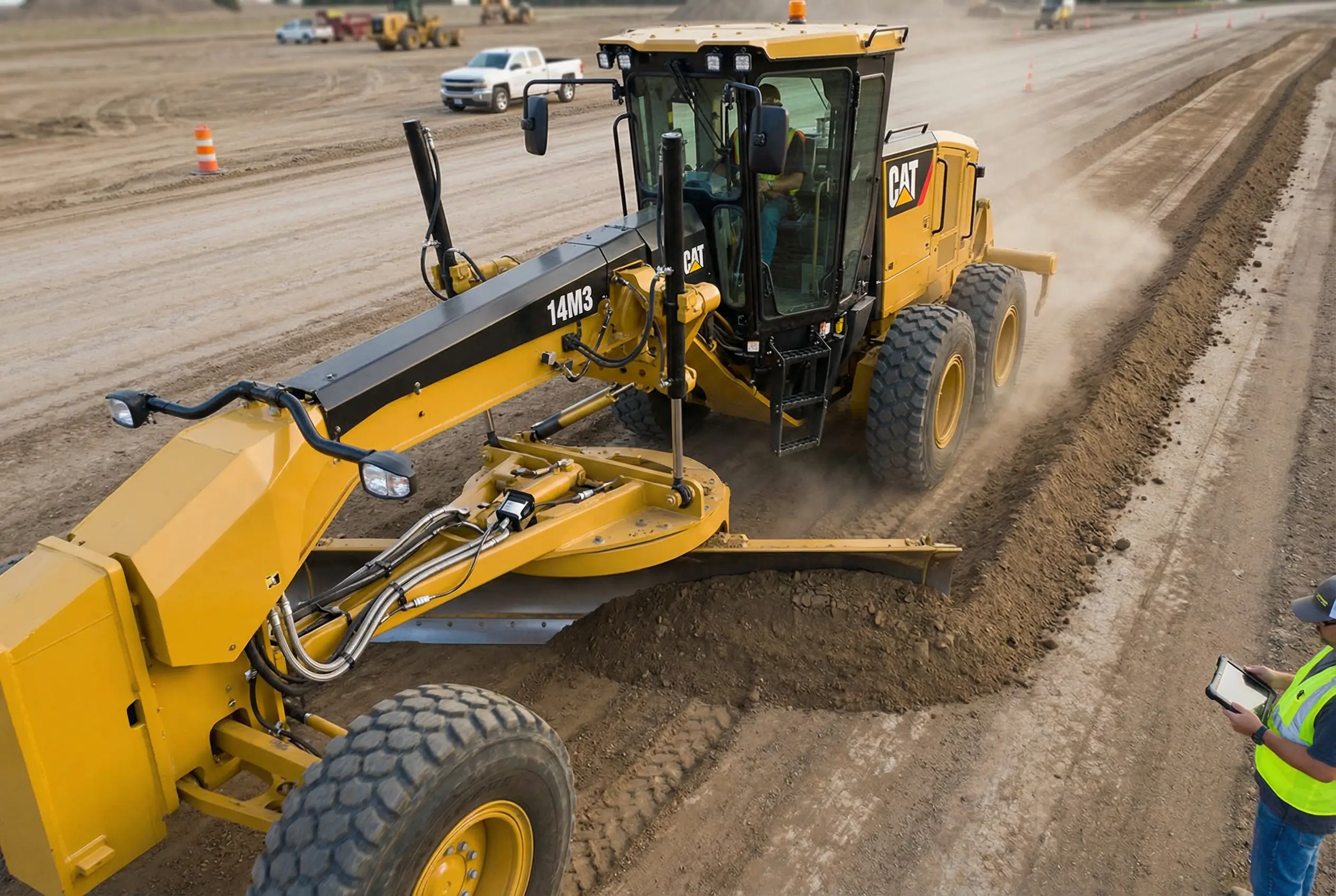
Motor Grader Predictive Diagnostics: Prevent Hydraulic Failures & Reduce Downtime

Pesticide Sprayer Calibration: Essential Safety Compliance Guide & Protection

Seeder Bearing Parts Sourcing Guide: Critical Components & Strategy

Downtime Prevention Through Smart Inventory for Grain Dryers

Combine Harvester Breakdown Prevention Guide: Predictive Analytics for Zero Downtime

Master Global Agricultural Parts Delivery | Mid-Season MRO Guide

Fixing Haul Truck Downtime Issues: Remote Parts Strategy Guide 2025

Blasting Equipment Safety Compliance: Must-Know Audit Requirements for 2025

The Step-by-Step Guide to Global Drill Rig Consumables Sourcing

Mining Conveyor Maintenance Guide: Detecting Hidden Risks in Underground Systems
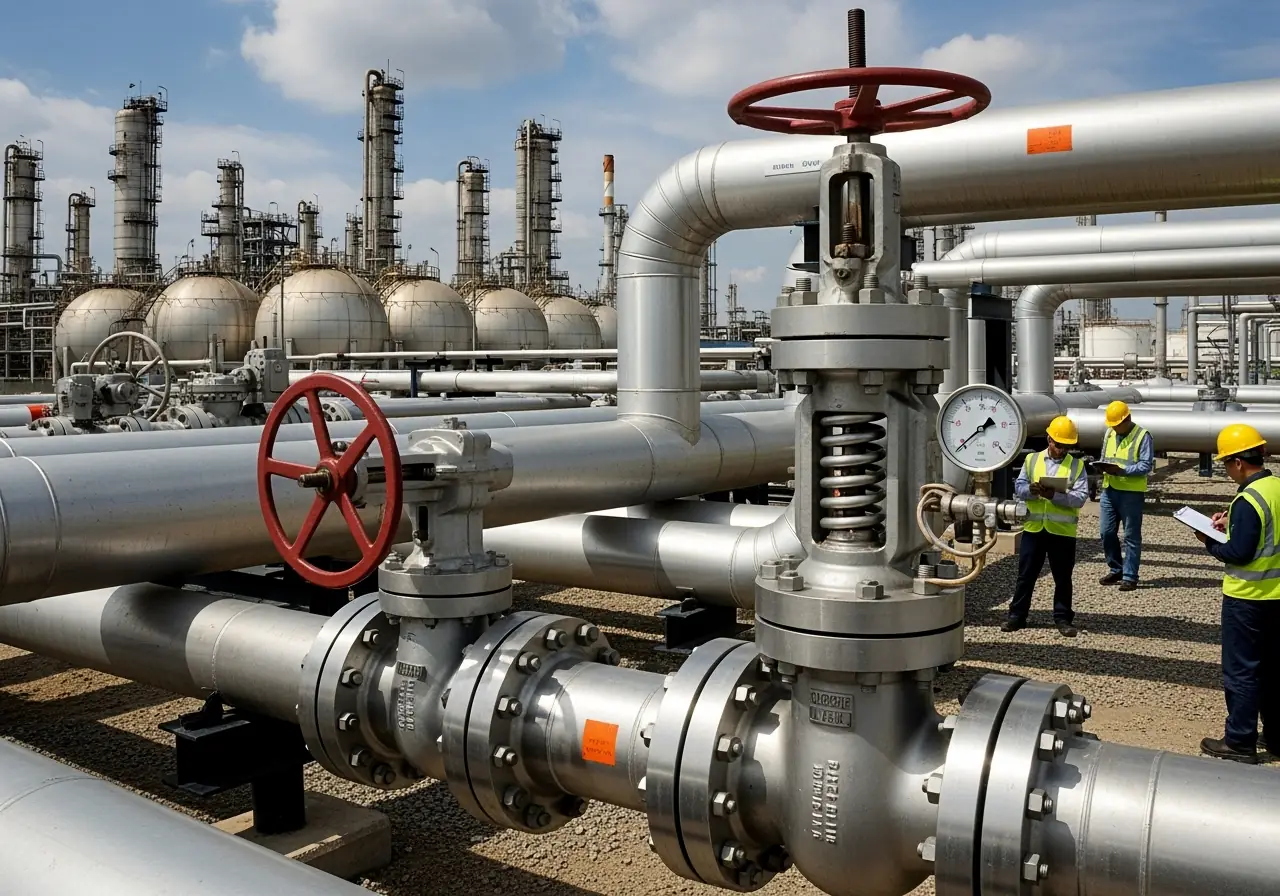
Best Practices for Certified Pipeline Valve Selection: From Specs to Installation

Optimizing Oil Rig PPE Delivery: Proven Strategies That Saved $2M Annually

FPSO Smart Parts Planning: Proven Methods to Cut Downtime
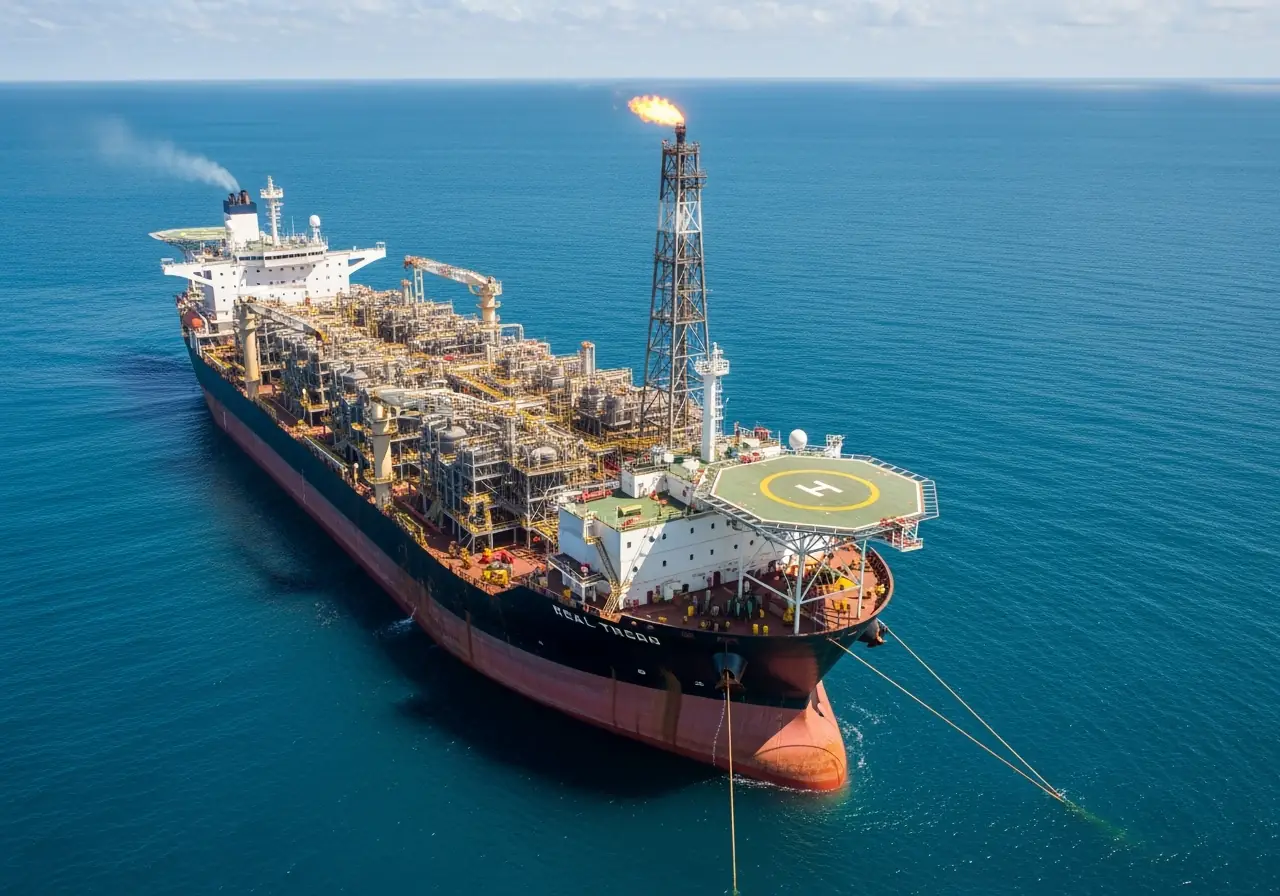
How FPSO Inspection Prevents Million-Dollar Shutdown Losses

Fix It Before It Breaks: A Farmer's Guide to Combine and Harvester Maintenance

Why Fast Tractor Parts Delivery is Changing Modern Farming [2025 Guide]

The Critical Farm Equipment Replacement Parts You Need Before Harvest 2025
.webp)
How to Double Your Farm Efficiency: Expert Guide to Smart Scaling

Cut Costs by 30%: Pre-Season Spare Parts Audit Checklist

Proven Success Factors for Agricultural Equipment Manufacturers in 2025

13 Overlooked Farm Spare Parts That Halt Operations — Pt. 2

13 Overlooked Farm Spare Parts That Halt Operations — Pt. 1

Top Hydraulic Components for Agricultural Equipment in 2025: Complete Guide

The Essential Farm Equipment Parts You Can't Afford to Run Out Of

How to Service Farm Equipment: A Farmer's Guide to Zero Harvest Downtime

Construction Machinery Parts Suppliers: Expert Selection Guide

How to Apply Machine Safety Rules: From Selection to Installation

Smart Diagnostics Cut Heavy Equipment Failures by 73%

5 Ways to Assess the Environmental Impact of Heavy Construction Machinery

10 Smart Ways to Pick Construction Machinery for 2025 Projects
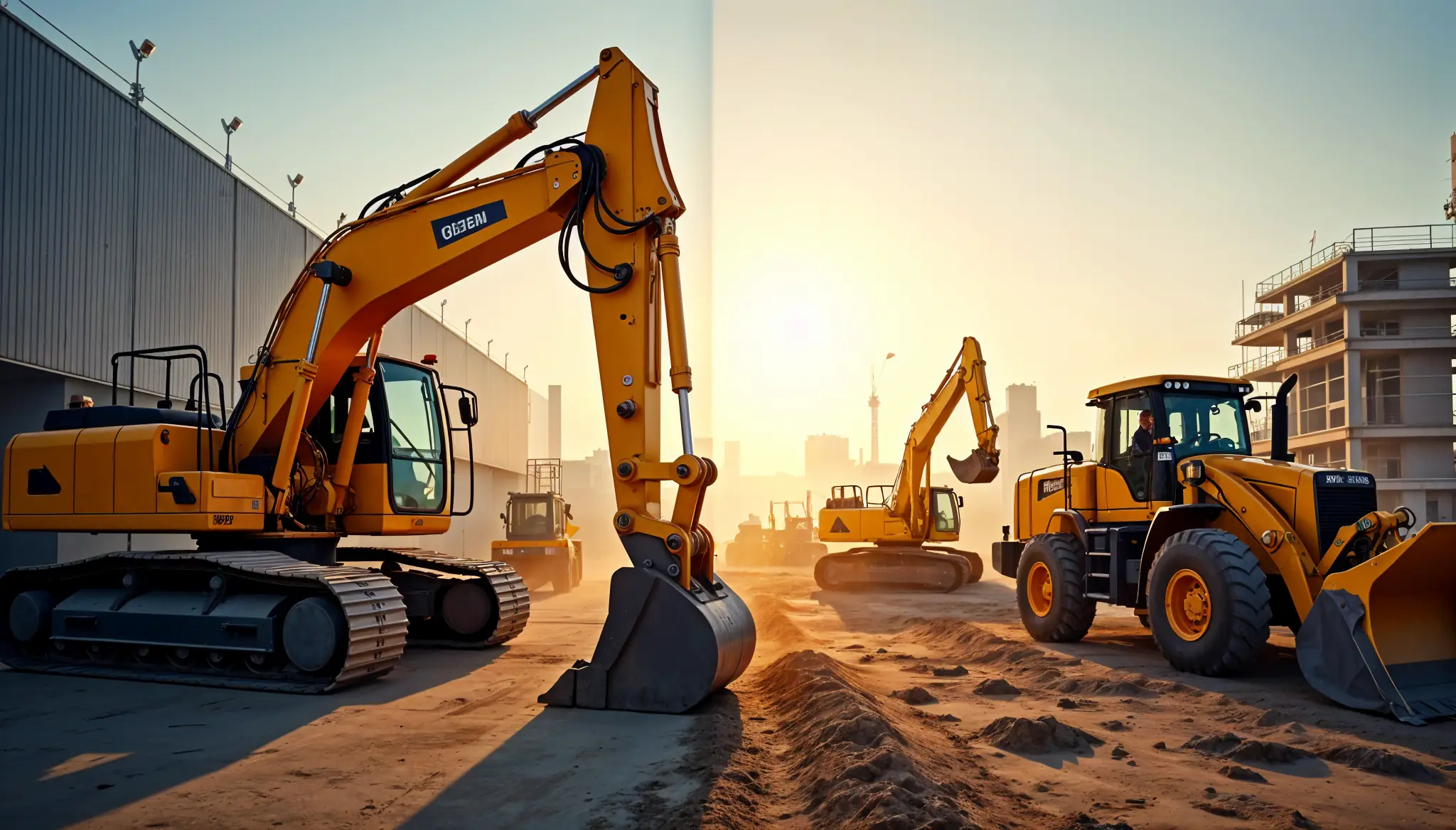
Rent vs Purchase Equipment: What Heavy Industry Experts Hide

How to Implement a Construction Inventory Management System for Equipment Efficiency

How to Extend Equipment Life Expectancy with Regular Maintenance

Advanced Heavy Equipment Diagnostic Tools: Ensuring Construction Machinery Quality
Essential Features Your Construction Equipment Inventory System Needs
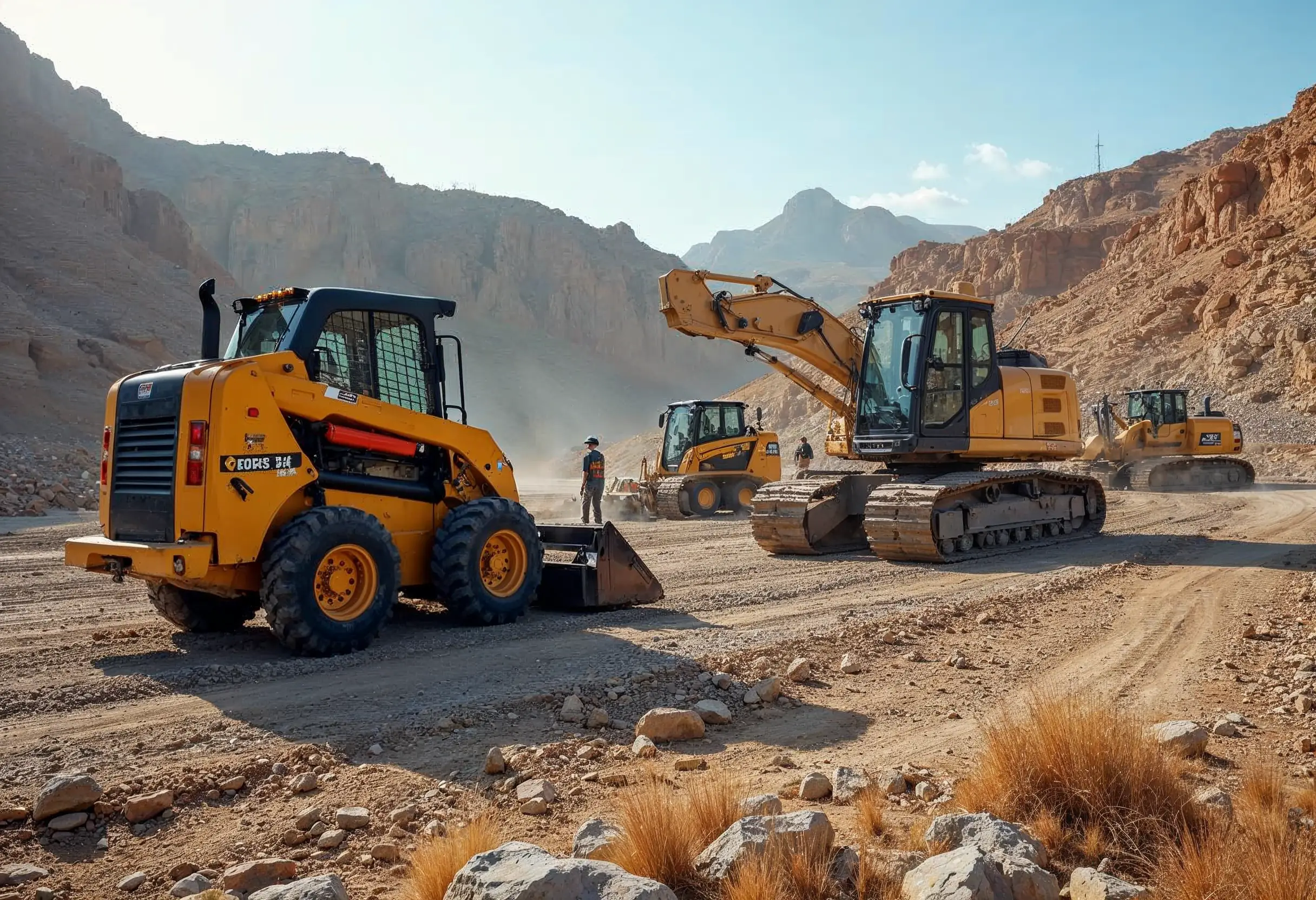
29 Quick Tips for Choosing Construction Equipment for Remote Locations

How to Select Construction Machinery with Optimal Equipment Maintenance in Mind

Top 25 Tips for Selecting Bulldozers for Construction Sites

Which Construction Loader is Best for Your Project Needs?

4 Key Steps to Form a Construction Machinery QC Team

15 Essential Tips for Selecting the Perfect Crane for Construction

Maximize Savings: Multi-Purpose Construction Machinery for Lower Costs

Affordable Heavy Equipment Parts: A Sourcing Guide

Choosing the Right Road Construction Equipment: A Complete Guide

Motor Graders: Key Elements to Consider for Optimal Selection

A Detailed Guide to Choosing Excavators for Construction Work

Top Tips for Choosing Cranes for Construction Projects
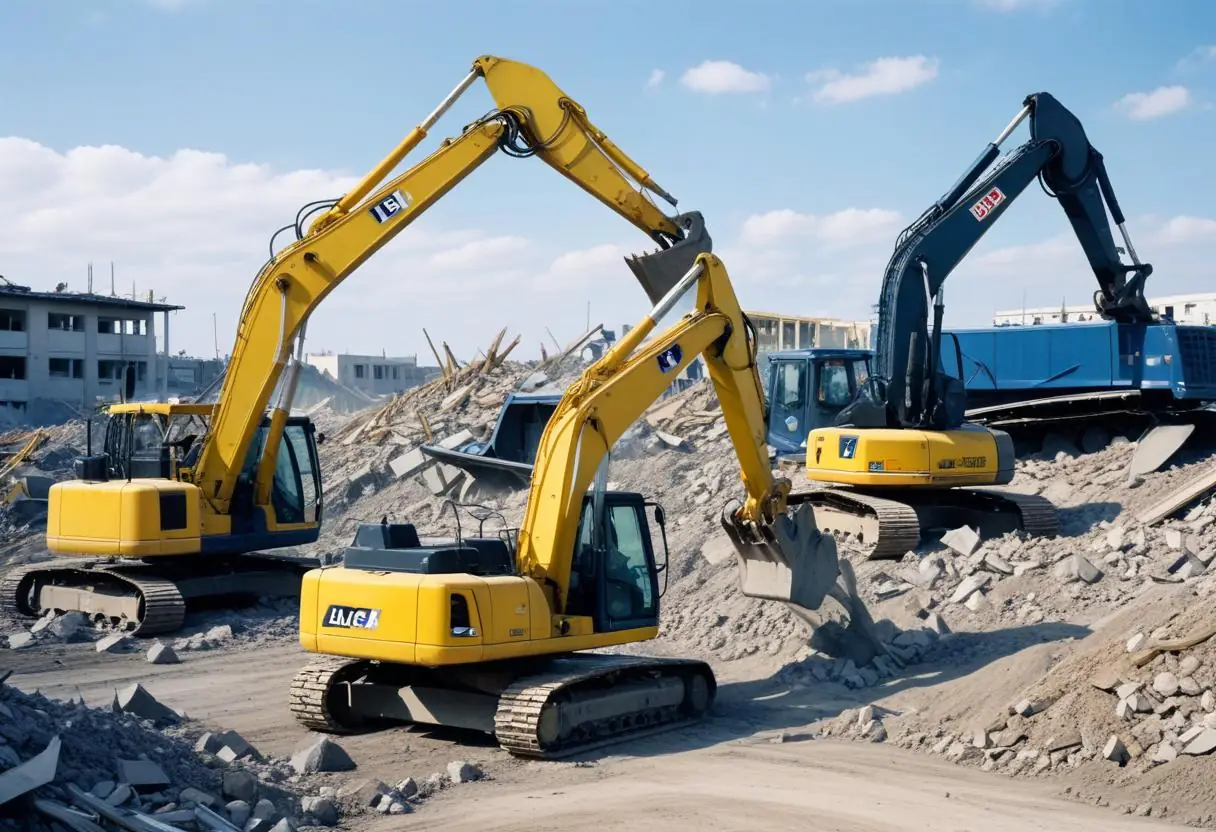
5 Top-Rated Demolition Machines for Construction Professionals

Expert Tips on Choosing Earthmoving Equipment for Large Projects

Top Functional Criteria for Selecting Heavy Construction Equipment

Construction Machinery: Detailed Guide to Equipment Specifications

Heavy Machinery Prices: Key Factors in Cost and Quality Balance

Best Construction Heavy Equipment Brands: Pros and Cons

Construction Site Equipment: How to Determine Your Requirements

Maximizing Safety: Risk Management for Construction Projects

Innovations in Construction: Transforming Machinery and Equipment

Heavy Equipment Safety: Beyond the Basics in Construction Compliance

The Essential Handbook for Construction Equipment Repair and Maintenance

How to Efficiently Source Oil and Gas Machinery Parts in NYC

Essential Guide to Sourcing Agriculture Equipment Parts

How to Source Mining Machinery Parts: Tips and Strategies
